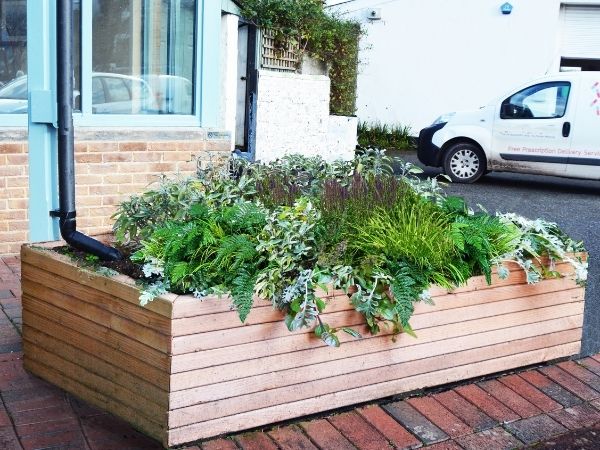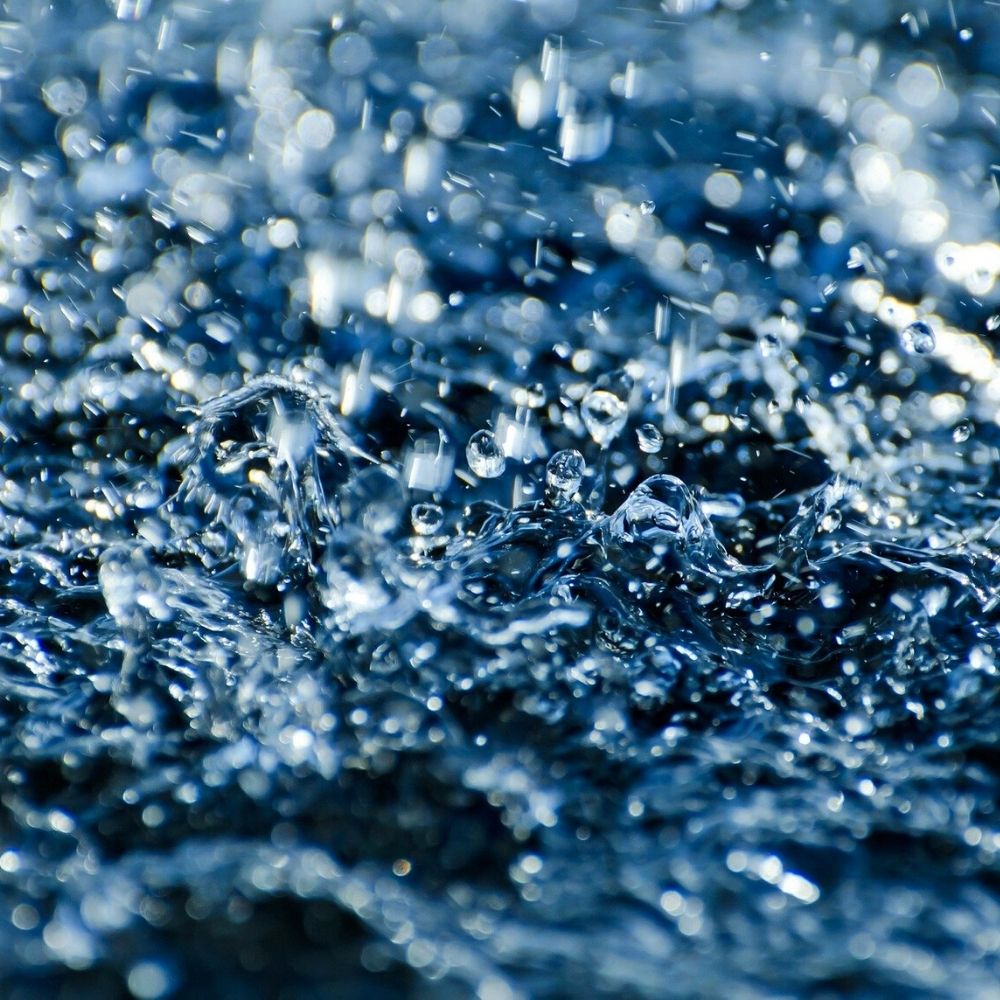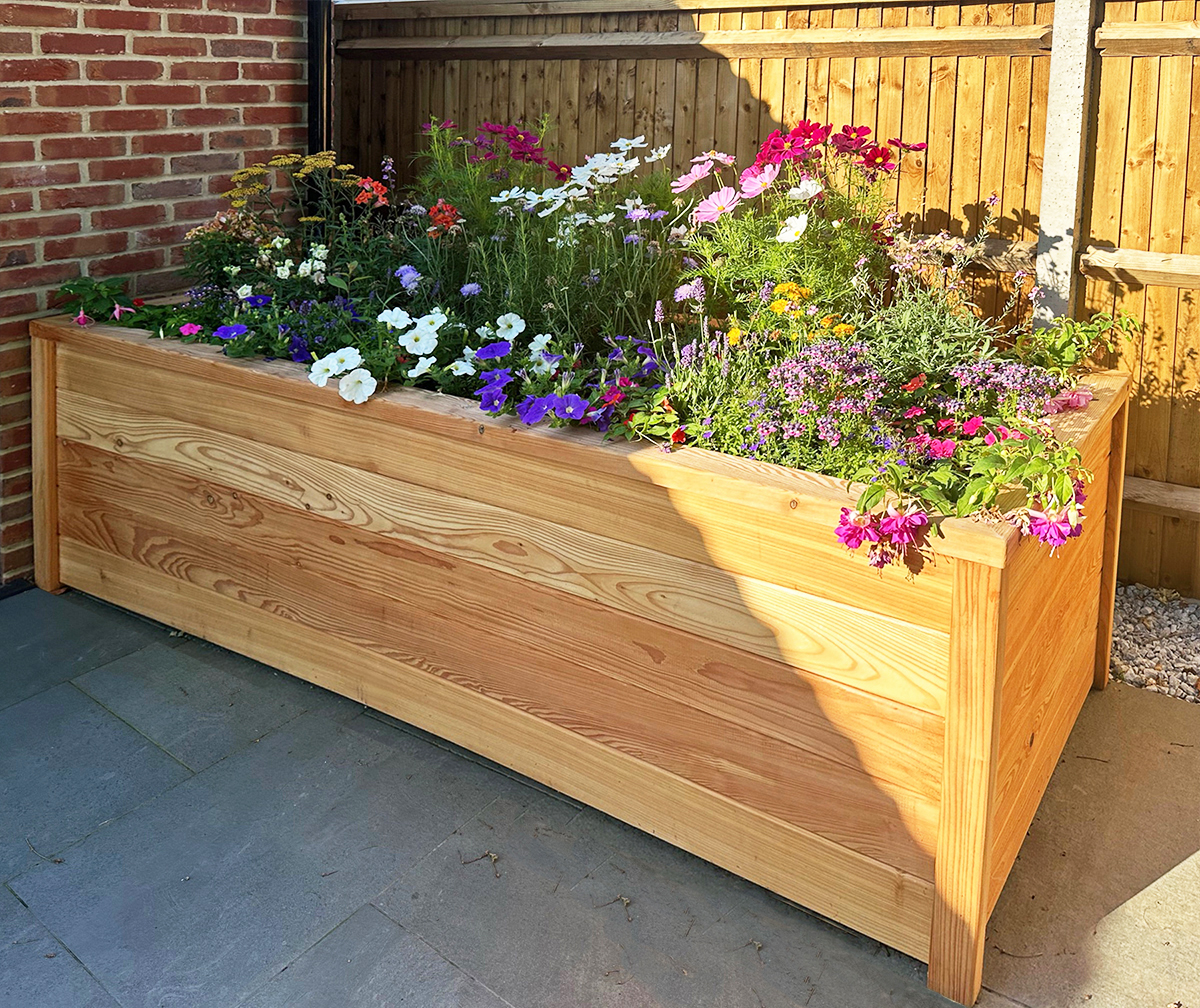Rain Gardens
With the extensive loss of front gardens, and other planted areas, including lawns, urban flooding occurs. This is because rain falls in towns and cities faster than it can be drained by the sewer network, absorbed into the soil or conveyed to streams, rivers, water bodies or reservoirs.
In recent years, with climate change, this is a major re-occurring problem in towns and cities throughout the UK.
Rain gardens are a key component of eco-friendly and sustainable landscapes.
Benefits of rain gardens, as recognised by the RHS
- Low maintenance garden – no watering once plants have established
- Can absorb up to 30% more water than a lawn
- Offers opportunities to plant a wide range of perennials
- Reduces erosion by slowing heavy rainfall
- Increased planting attracts insects and birds
- Avoids the need to sink a soakaway
Sustainable Drainage Systems (SuDS)
Rain gardens provide an inexpensive and instant way to create an attractive attenuating Sustainable Drainage System (SuDS)* that will:
- slow surface water flows
- significantly reduce surface water flood risk, particularly in urban areas with extensive sloping roof areas
- filter pollution and improve water quality
*SuDS - Sustainable drainage systems include a range of techniques for holistically managing water run-off to reduce the quantity, of surface water that drains into sewers from a development. The SuDS increase the quality of the water release by a natural filtering purification processes. In general SuDS mimic natural systems, and manage rain close to where it falls. SuDS not only reduce the burden on our sewerage system, they can also help wildlife to thrive in urban areas, with many of the drainage systems being intrinsically wildlife friendly.
Rain Garden Planters
Rain Garden Planters, or Gutter Planters, adopt the principles of SuDS,
Designed to:
- manage rainwater run-off from domestic and commercial roofs
- reduce the risk of flooding in the sewer network
- improve the quality of surface water entering streams and rivers
Rain garden planters make use of the water that lands on the roof and works in the following way:
1. Water from the downpipe is directed into the planter.
2. The soil / compost mix absorbs and stores the rainwater for the plants to use.
3. Excess rainwater filters into the gravel layer and drains out the base drainage pipe, as illustrated in the adjacent diagram.
Best Plants for Rain Gardens
Plants for rain planters have to be able to tolerate some wetness at the root zone as well as grow in more normal conditions.
Typical plants include Iris pseudocorus and a range of perennials such as:
- Geraniums
- Persicarias
- Hemerocallis
- Grasses such as Deschampsia or Miscanthus
Some shrubs such as Cornus sanguinea or even trees, such as Betula would be suitable for a large planter.
See the table below for a comprehensive list of plants suitable for rain gardens, as recommended by South East Rivers Trust:
|
Common name |
Scientific name |
Habit |
Sunlight and Aspect |
Origin |
|
Guelder rose |
Viburnum opulus |
Perennial shrub |
Any |
Native. Flowers attract insects and berries are eaten by birds. |
|
Dogwood |
Cornus sanguinea |
Perennial shrub |
Any |
Native. Leaves are larval food for vase bearer moth and berries eaten by birds. Often planted for attractive winter stems. |
|
Culvers root |
Veronicastrum virginicum |
Herbaceous perennial |
Full sun or partial shade |
Non-native. Tall with long terminal blue flower spikes. On the RHS ‘plants for pollinators’ list. |
|
Aster |
Aster spp. |
Herbaceous perennial |
Full sun or partial shade |
Non-native. Often late flowering. Clump forming. Several species on the RHS ‘plants for pollinators’ list. |
|
Black eyed susan |
Rudbeckia birta |
Herbaceous annual or biennial |
Full sun or partial shade |
Non-native. Spectacular yellow and black flowers. On RHS ‘plants for pollinators’ list. |
|
Stinking hellebore |
Helleborus foetidus |
Herbaceous perennial |
Full sun or partial shade |
Native. Winter flowers. |
|
Montbretia |
Crocosmia spp. |
Deciduous rhizomatous perennial |
Partial shade |
Naturalised. Red flowers. Thrives in most conditions. |
|
Bugle |
Ajuga reptans |
Rhizomatous perennial |
Partial shade |
Native. Low growing and will form a mat. |
|
Columbine |
Aquilegia spp. |
Herbaceous perennial |
Full sun or partial shade |
Non-native. Clump forming with tall flower spikes. On RHS ‘plants for pollinators’ list. |
|
Inula |
Inula hookeri |
Herbaceous perennial |
Partial shade |
Tall clump forming with yellow flowers. On RHS ‘plants for pol- linators’ list. |
|
Hemp agrimony |
Eupatorium cannabinum |
Herbaceous perennial |
Full sun or partial shade |
Native. Sub-shrubs with pink flowers. |
|
Bellflower |
Campanula glomerata |
Herbaceous perennial |
Full sun or partial shade |
Native. Clumps bearing violet-blue bell shaped flowers. |
|
Sneezeweed |
Helenium sp. |
Herbaceous perennial |
Full sun |
Non-native. Clump forming with red flowers. On RHS ‘plants for pollinators’ list. |
|
Lesser periwinkle |
Vinca minor |
Perennial sub-shrub |
Any |
Non-native. Ground cover with blue flowers. |
|
Elephants ear |
Bergenia sp. |
Rhizomatous perennial |
Full sun or partial shade |
Non-native. Large leaves and pink flowers. |
|
Plantain lilies |
Hosta spp. |
Herbaceous perennial |
Part shade |
Non-native. Attractive light coloured flowers. |
|
Yellow flag |
Iris pseudocorus |
Rhizomatous perennial |
Full sun or partial shade |
Native. Likely to prefer wetter areas near inlet. |
|
Siberian flag |
Iris sibirica |
Rhizomatous perennial |
Full sun or partial shade |
Non-native. Blue flowers. Prefers moist but well drained soil. |
|
Garlic and onions |
Allium spp. |
Bulbous perennials |
Full sun |
Non-native. On RHS ‘plants for pollinators’ list. |
|
Soft rush |
Juncus effusus |
Evergreen perennial |
Full sun or partial shade |
Native. Form tussocks – likely to prefer wetter areas. |
|
Pendulous sedge |
Carex pendula |
Rhizomatous perennial |
Full sun or partial shade |
Native. Nodding flower spikes. Likely to prefer wetter areas near inlet. |
|
Zebra grass |
Miscanthis sinensis |
Perennial, deciduous grass |
Full sun |
Non-native. Tussock forming ornamental grass with silky flowers. |
|
Switch grass |
Panicum virgatum |
Deciduous perennial grass |
Full sun |
Non-native. Tussock forming ornamental grass. |
|
Royal fern |
Osmunda regalis |
Deciduous fern |
Any |
Native. Large clump-forming plants. |
|
Male fern |
Dryopteris felix-mas |
Deciduous or evergreen fern |
Partial shade or full shade |
Native. Large shuttlecock-like form. |
|
Broad buckler fern |
Dryopteris dilatata |
Deciduous or evergreen fern |
Partial shade or full shade |
Native. Large shuttlecock-like form. |
(From Thames Water UK Rain Garden-Guide)
Rain Garden Planters: An Attractive Adaptation of Sustainable Drainage Systems (SuDS)

Rain Garden Planters are designed to help prevent Flooding
Even if you don’t have room for a rain garden you can still implement sustainable stormwater management. Rain garden planters, or gutter planters, handle rainwater runoff from rooftops and operate like a rain garden inside a planter.
Rain garden planters are perfectly suited to small spaces, as they can be built close to buildings in any configuration and don’t take up very much space.
These planters are an attractive adaptation of Sustainable Drainage Systems (SuDS) which slows surface water flows,
and reduces surface water flood risk.
With both bioretention and additional internal storage, these planters are an innovative solution to property level retro-fit SuDS, and can work out very much less expensive than most groundworks interventions.
The planter can be made from a number of materials, but we prefer commercial quality Larch Planters for the following reasons:
- produced by UK craftsmen using Larch from sustainably grown larch woodlands.
- Larch produces its own intrinsic preservative providing a very long planter life without the use of toxic preservatives.
- Alternative materials are linked to non sustainable production issues from energy consumption to pollution or toxic issues.
A rain garden planter is a waterproof container, with an internal large water storage area linked to a controlled release internal drainage system.
Above the important water storage area is a series of filter membranes separating the plants and compost/soil mix at the top of the planter for aesthetic and Biodiversity value
Water may discharge from a planter into the normal drains or it could be diverted further into a Rain Garden.
For an enhanced biophilic and aesthetic effect, we like to encourage the construction of landscaped features that the water could travel along and slowly percolate into the soil, such as an attractively constructed rill, gulley or channel into a garden bed, as in the example below.

Your name *











